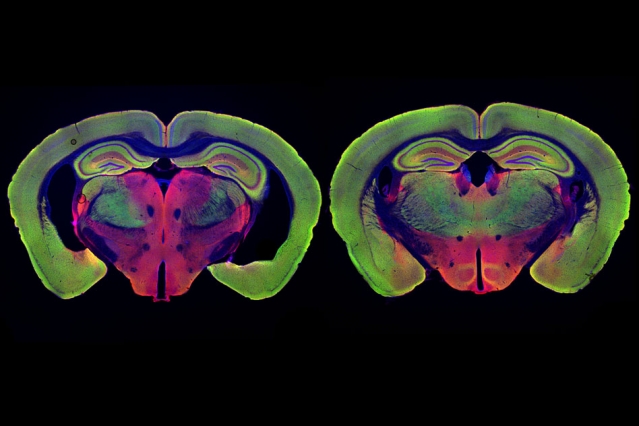MIT researchers have unveiled a study in 2016 that exposure to LED flickering light with a specific frequency could reduce the amyloid plaques seen in mice with Alzheimer’s disease. The team recently published a new study which explains the effect of the light therapy at cell level.
The new study, published in Neuron on May 7, found that this light treatment has widespread effects at the cellular level, helping not just neurons but also immune cells called microglia. Overall, these effects reduce inflammation, enhance synaptic function, and protect against cell death, in mice that are genetically programmed to develop Alzheimer’s disease.
With the treatment first revealed in 2016, Li-Huei Tsai, the director of MIT’s Picower Institute for Learning and Memory, and her team found out that visual stimulation at a frequency of 40 hertz (cycles per second) induces brain waves known as gamma oscillations in the visual cortex. These brain waves are believed to contribute to normal brain functions such as attention and memory, and previous studies have suggested that they are impaired in Alzheimer’s patients. Furthermore, combining the light therapy with sound could further intensify the effects.
In order to find out how the light treatment works, researchers focused on two different strains of mice, Tau P301S, which forms neurofibrillary tangles like those seen in Alzheimer’s patients; and CK-p25, which causes severe neurodegeneration. They started the treatments shortly before degeneration would have been expected to begin, in both types of Alzheimer’s models. After three weeks of treatment, Tau P301S mice showed no neuronal degeneration, compared to those untreated Tau P301S mice that lost 15 to 20 percent of their neurons. Neurodegeneration was also prevented in the CK-p25 mice, which were treated for six weeks.

At left is the brain of a mouse genetically programmed to develop Alzheimer’s disease. At right, the brain of a mouse programmed to develop the disease, but treated with noninvasive visual stimulation, shows much less neurodegeneration. Image: MIT/Chinnakkaruppan Adaikkan
The researchers analyzed the changes in gene expression that occurred in treated and untreated mice, in both neurons and microglia. In the neurons of untreated mice, the researchers saw a drop in the expression of genes associated with DNA repair, synaptic function, and a cellular process called vesicle trafficking, which is important for synapses to function correctly. However, the treated mice showed much higher expression of those genes than the untreated mice. The researchers also found higher numbers of synapses in the treated mice, as well as a greater degree of coherence (a measure of brain wave synchrony between different parts of the brain).
In their analysis of microglia, the researchers found that cells in untreated mice turned up their expression of inflammation-promoting genes, but the treated mice showed a striking decrease in those genes, along with a boost of genes associated with motility. This suggests that in the treated mice, microglia may be doing a better job of fighting off inflammation and clearing out molecules that could lead to the formation of amyloid plaques and neurofibrillary tangles, the researchers say. They also found lower levels of the version of the Tau protein that tends to form tangles.
A key unanswered question, which the researchers are now investigating, is how gamma oscillations trigger all of these protective measures, said Tsai.
The researchers also plan to test the treatment in mice with more advanced symptoms, to see if neuronal degeneration can be reversed after it begins. They have also begun phase 1 clinical trials of light and sound stimulation in human patients.
Related reading:
Flickering LED Light Treatment can Pave Way to Alzhemer Cure





 CN
TW
EN
CN
TW
EN






